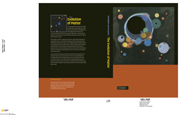Book contents
- Frontmatter
- Contents
- Introduction
- Part I The elements
- Part II Early solar system: nebula formation, evolution and lifetime
- Part III Accretion of the Earth
- 14 Introduction to the planetary system, Earth and Moon
- 15 Introduction to planetary accretion
- 16 Earth accretion: the giant impact(s)
- 17 The post-accretion silicate Earth: comparison with meteorites
- 18 Core segregation
- 19 Heavy “crust” on the top of the core
- 20 The early atmo-hydrosphere
- 21 Light from the Moon …
- Part IV Global evolution of the Earth
- References
- Glossary
- Abbreviations
- Meteorites, rocks and minerals
- Index
18 - Core segregation
Published online by Cambridge University Press: 04 September 2009
- Frontmatter
- Contents
- Introduction
- Part I The elements
- Part II Early solar system: nebula formation, evolution and lifetime
- Part III Accretion of the Earth
- 14 Introduction to the planetary system, Earth and Moon
- 15 Introduction to planetary accretion
- 16 Earth accretion: the giant impact(s)
- 17 The post-accretion silicate Earth: comparison with meteorites
- 18 Core segregation
- 19 Heavy “crust” on the top of the core
- 20 The early atmo-hydrosphere
- 21 Light from the Moon …
- Part IV Global evolution of the Earth
- References
- Glossary
- Abbreviations
- Meteorites, rocks and minerals
- Index
Summary
Introduction: siderophile elements in the silicate mantle and light elements in the core
Siderophile-element abundance pattern in the Earth's mantle
As discussed above, it is an important feature of the silicate Earth that its refractory-lithophile-element abundances are like those of chondrites, thus documenting a relation between the Earth and chondritic matter. In contrast, the siderophile elements are depleted in the silicate Earth, almost certainly because of their segregation into the metallic core. Their relative depletion pattern provides important clues on the core-segregation process (Wänke et al., 1984; Ringwood, 1984; Jones and Drake, 1986; Newsom, 1990; O'Neill, 1991a, b).
Transitional, moderately and highly siderophile elements constitute three groups that are progressively depleted, thus pointing to metal–silicate fractionation having played an important role in core formation (Fig. 18.1). However, (1) within each group the observed chondrite-normalized abundance pattern is almost flat and contrasts with the variable abundances predicted from metal–silicate equilibrium fractionation. Also (2) for strongly siderophile and for most moderately siderophile elements, the observed abundances greatly exceed those predicted from equilibrium fractionation, while for W and the transition elements they are lower.
Becker et al. (2006) recently reported new data for highly siderophile element (HSE) concentrations in the mantle. Their best estimate, [Ir] = 3.5 ppb, is indistinguishable from the previous average value suggested by Morgan et al. (2001), and the C1-normalized HSE pattern is flat except for a small enhancement of [Ru] (by a factor 1.4) that is not revealed by previous data sets.
- Type
- Chapter
- Information
- The Evolution of MatterFrom the Big Bang to the Present Day, pp. 231 - 242Publisher: Cambridge University PressPrint publication year: 2008



